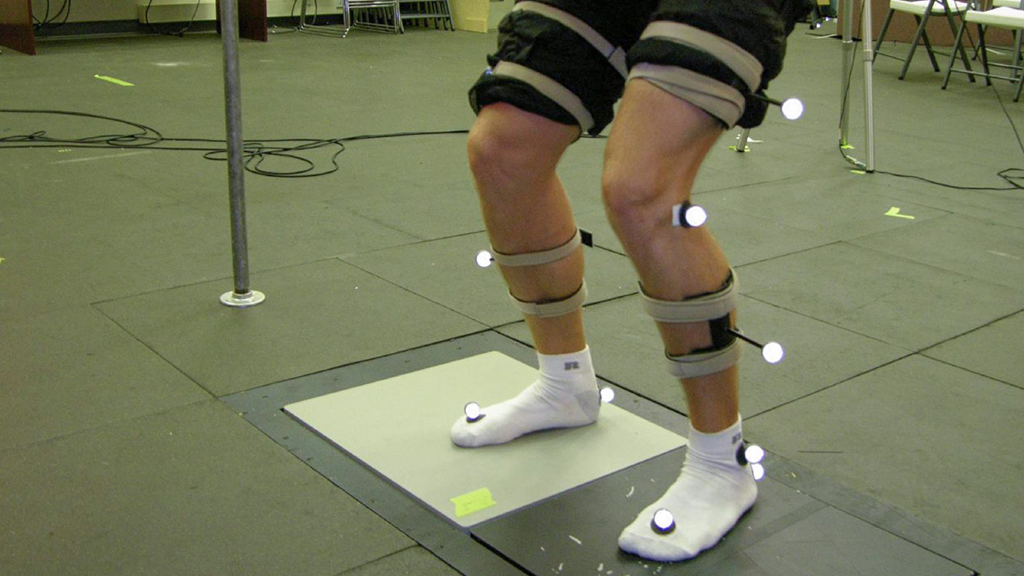3-D gaming technology helps stroke victims walk again

Back to physical health resource hub
Chris McTarnigan has made amazing progress after a stroke in 2013 left him with slurred speech, limited mobility and the inability to swallow. After treatment in Brooks Rehabilitation Hospital and the Neuro Recovery Center, Chris was referred for an assessment at the Brooks Rehabilitation Motion Analysis Clinic (MAC).
The MAC’s 1,728 square foot laboratory is equipped with a Vicon motion analysis system consisting of twelve infrared cameras and two video cameras positioned strategically around the room. This is the same technology used to create 3-D video games. Retro-reflective markers were placed on Chris to track the motion of his limbs during movement. Electromyography (EMG) electrodes are placed over certain muscles to record when those muscles are turning on and off during movement. Four force plates in the floor are used to record the ground reaction force between his feet and the floor. When a marker is in view of multiple cameras, the biomechanical software creates a 3-dimensional model which can be used to measure joint movements and powers. The biomechanical and EMG data collected during the assessment can be used to guide further treatment, quantify the progress he’s made already, and justify ongoing therapeutic needs.